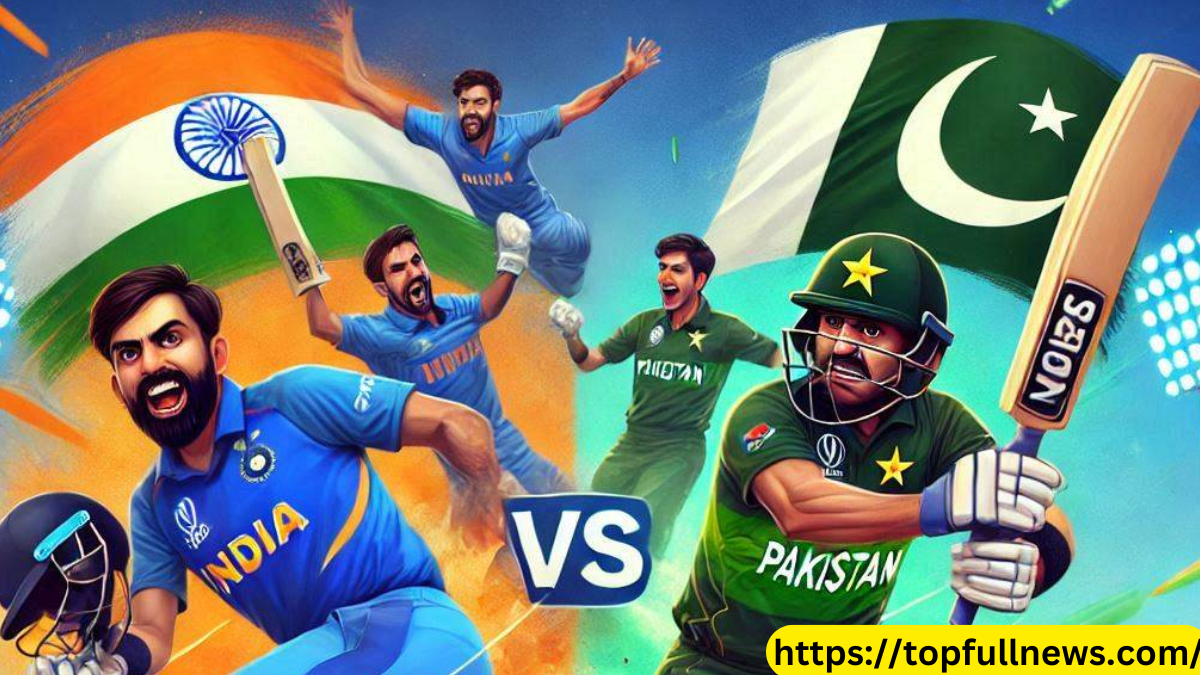The rivalry between the India National Cricket Team and the Pakistan National Cricket Team is one of the most intense and storied rivalries in the history of international cricket. The contests between these two cricketing giants are about more than just the game itself; they are laden with historical and political undertones, creating an atmosphere of heightened drama and passion. Over the decades, their matches have witnessed thrilling cricketing moments, memorable performances, and, at times, controversial decisions, all of which have etched themselves into the annals of cricketing history. The timeline of India vs Pakistan encounters is a testament to the significance of this rivalry, with each match carrying its own unique narrative.
The Genesis of the Rivalry
The India-Pakistan cricket rivalry began in earnest after the two nations gained independence from British rule in 1947. The political landscape between the countries, coupled with the partition that led to the creation of Pakistan, meant that the two nations did not play each other regularly for a long period. Their first Test match took place in 1952 in New Delhi, a few years after both countries gained Test status in the 1940s. However, the match was not as widely publicized or as intense as the contests that followed in the coming decades.
The early years of the rivalry India National Cricket Team vs Pakistan National Cricket Team Timeline were characterized by sporadic meetings, as the political tension between India and Pakistan made it difficult to organize bilateral cricket series. During this time, cricket in both countries was still finding its footing, and the rivalry had not yet reached the level of intensity that it would achieve in later years. The games that did take place were often overshadowed by off-field tensions.
1970s: Early Encounters and Building Intensity
It wasn’t until the 1970s that the India-Pakistan cricket rivalry began to truly take shape. The political relationship between the two nations remained turbulent, especially after the 1971 war and the subsequent creation of Bangladesh, which added another layer of complexity to the situation. Cricket, however, began to serve as a platform for both nations to assert their dominance on the world stage.
In 1978, India and Pakistan met in a One-Day International (ODI) for the first time during the World Series Cricket. The match ended in a draw, but it was a significant moment as it marked the beginning of the modern India-Pakistan cricket rivalry. This was followed by several encounters in the 1980s, particularly in the Asia Cup, where both teams often played with great intensity. The 1982-83 series between India and Pakistan was one of the first occasions where the teams started to gain global attention, as players like Kapil Dev and Imran Khan brought their countries to the forefront of international cricket.
By the mid-1980s, the rivalry between India and Pakistan had truly become an iconic fixture in world cricket. However, despite the intensity of these encounters, India and Pakistan only played each other in major international tournaments, as bilateral series remained scarce due to political reasons. The matches, when they occurred, were full of excitement and drama, and this period laid the foundation for what would become one of the most anticipated rivalries in the sport.
The 1990s: A New Era of Competition
The 1990s brought a new wave of cricketing talent to both India and Pakistan. For India, the emergence of players like Sachin Tendulkar, Anil Kumble, and Sourav Ganguly began to elevate the team’s performance. Pakistan, too, had a generation of players led by Imran Khan, Wasim Akram, and Javed Miandad, who were capable of taking on the best teams in the world.
In 1992, India and Pakistan met in the 1992 Cricket World Cup, a historic tournament for both teams. Pakistan emerged victorious in the match, which was held at the Sydney Cricket Ground in Australia. This game was significant for several reasons: not only was it part of a high-stakes World Cup, but it was also a reflection of the growing competitiveness of the rivalry. Pakistan’s victory in this match set the stage for future encounters, as the intensity of the competition between the two nations continued to rise.
However, the most iconic moment of the 1990s came in 1996, when the two teams met in the quarter-finals of the 1996 World Cup, held in India. India emerged victorious in this high-pressure encounter, defeating Pakistan in front of a raucous crowd in Bangalore. The atmosphere at the M. Chinnaswamy Stadium that day was electric, with millions of fans glued to their televisions, and the match became one of the defining moments in the India-Pakistan cricket rivalry. India’s win in this match was seen as a triumph, not only in cricketing terms but also symbolically, as it took place on Indian soil.
The Early 2000s: A Period of Continued Tension and Great Matches
The early 2000s saw several more memorable encounters between India and Pakistan. Cricket, being one of the few platforms where the two countries could meet, continued to provide moments of high drama. One of the most famous encounters came in 2003 when the two teams met in the group stages of the ICC Cricket World Cup in South Africa. India defeated Pakistan in a thrilling encounter at the Centurion, with a brilliant knock from Sourav Ganguly and solid contributions from Virender Sehwag and others. Pakistan’s response, led by Shahid Afridi, came up short, and India’s victory was seen as a reaffirmation of their growing dominance in the sport.
The rivalry was also defined by some incredibly close matches in the ODI format. One of the most memorable was in 2004 when the two teams played a series in India. Pakistan won the first ODI, but India bounced back strongly in the following matches. The series provided thrilling contests, with incredible performances from players like Yuvraj Singh, Mohammad Kaif, and Shahid Afridi.
However, despite the on-field drama, the political situation between the two countries remained tense, and their encounters were often marred by off-field controversies. The lack of regular bilateral series during this time also meant that each meeting between the two sides felt like an event, further heightening the anticipation and the stakes.
The 2010s: Global Events and Changing Dynamics
The 2010s marked a shift in the nature of the rivalry, especially with the increasing prominence of India in world cricket. India’s rise as a global cricketing powerhouse, with players like Virat Kohli, MS Dhoni, and Rohit Sharma, meant that Pakistan was often seen as the underdog in the rivalry. India’s consistent success in major tournaments such as the ICC World Cup (2011) and the ICC Champions Trophy (2013) set them apart as the dominant force in world cricket. However, the rivalry between the two nations remained just as intense.
In 2015, the two teams met in the ICC Cricket World Cup once again. India defeated Pakistan convincingly in the group stages, continuing their dominance over their neighbors in World Cup encounters. But Pakistan did manage to secure a victory in the 2017 ICC Champions Trophy final, defeating India in a historic final at The Oval. This marked Pakistan’s first major victory over India in a global final, and it was celebrated as a significant achievement in Pakistani cricket.
The 2010s also saw the resurgence of the Pakistan cricket team under new leadership, with players like Babar Azam and Shaheen Shah Afridi taking the limelight. Despite the challenges, Pakistan’s ability to occasionally defeat India in global tournaments reminded the cricketing world that the rivalry was still as fierce as ever.
The 2020s: The Rivalry Continues
As we enter the 2020s, the India-Pakistan cricket rivalry continues to remain a focal point for cricket fans around the world. However, due to the ongoing political tension between the two nations, the encounters have become less frequent. Both teams now primarily meet in global events, such as the ICC World Cup or the ICC T20 World Cup, with fans from both countries eagerly awaiting their next face-off.
The most recent meeting between the two teams came in the 2021 ICC T20 World Cup, where India and Pakistan played in a high-stakes match in Dubai. This encounter was historic for a number of reasons. Pakistan, for the first time in World Cup history, defeated India National Cricket Team vs Pakistan National Cricket Team Timeline in a one-sided match, with Babar Azam and Mohammad Rizwan leading the charge with the bat. The match ended in a dominant victory for Pakistan, marking a significant moment in the timeline of the rivalry.
Conclusion
The timeline of the India National Cricket Team vs Pakistan National Cricket Team rivalry is a chronicle of cricketing history, filled with moments of high drama, iconic performances, and unforgettable encounters. From the first meeting in 1952 to the more recent matches, the rivalry has transcended the sport, capturing the imagination of millions of fans worldwide. The competition between these two teams is not merely about cricket; it is a reflection of the deep cultural, political, and emotional ties that both nations share. As long as cricket is played, the India-Pakistan rivalry will remain a cherished and defining aspect of the sport, with each new match adding another chapter to this epic saga.






